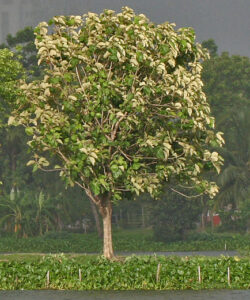PRELIMS

Context:
Tissue-cultured teak is gaining popularity in India as a high-yield, fast-growing alternative to meet the growing demand for timber.
Why Tissue Culture?
Tissue culture is a biotechnological method of propagating plants using small tissue samples (cells or tissues) in a controlled, sterile environment. This technique allows for rapid multiplication and ensures genetic uniformity.
Key Benefits of Tissue Culture:
- Rapid Propagation: Enables the fast, large-scale multiplication of plants from small tissue samples.
- Disease-Free Plants: Ensures that the plants propagated are free from diseases, pests, and pathogens.
- Genetic Uniformity: Produces genetically identical plants with consistent quality, size, and growth.
- Increased Yield: Helps produce more productive plants with better growth characteristics.
- Conservation: Aids in conserving rare or endangered plant species.
- Reduced Time: Speeds up breeding cycles and accelerates the production of new cultivars.
Characteristics of Teak:
- Scientific Name: Tectona grandis | Family: Lamiaceae
- Common Names: Sagon, Sagwan, Teca
- Tree Size: A large deciduous tree, growing 30-40 meters tall, with a cylindrical trunk (1-1.5 meters in diameter).
- Wood: The wood is golden-brown to dark brown, highly durable, water-resistant, and pest-resistant.
- Light Requirement: A light-demanding species, requiring open sunlight for optimal growth.
- Conservation Status:
- IUCN: Endangered
- CITES: Not listed in any appendix
- WPA: Not listed
African teak is considered endangered by the IUCN (2004) and is listed in Appendix II of CITES, regulating its international trade.
- Native: Native to South and Southeast Asia, particularly in India, Myanmar, Thailand, Laos, and Indonesia.
- Distribution in India: Found in Madhya Pradesh, Maharashtra, Karnataka, Kerala, Tamil Nadu, Assam, and Northeast India.
- Soil and Climate: Prefers well-drained, alluvial or loamy soils with a pH range of 6.5-7.5. It requires 1000-2500 mm of annual rainfall and a distinct dry season for leaf shedding and flowering. It thrives in tropical to subtropical climates and is not frost-tolerant.




